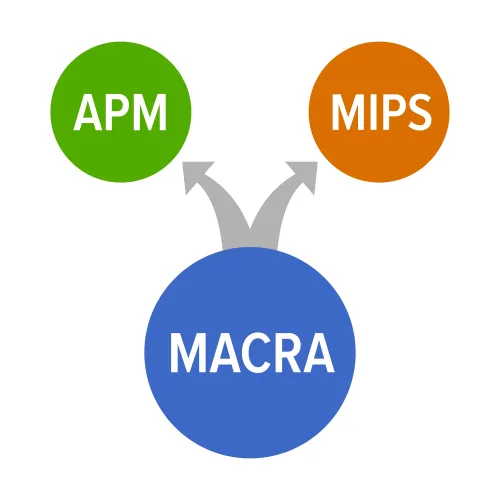Part B Insider (Multispecialty) Coding Alert
Bipartisan Budget Act Slims Some MIPS Requirements

Cost category percentages could remain status quo, BBA suggests
As the dust settles on Performance Year 1 of the Quality Payment Program (QPP), Part B providers are heaving a sigh of relief. And, though the calculations aren't in yet on whether Medicare's reimbursement opus was a success, the government has already decided to reduce some requirements in 2018 and beyond.
Context: MACRA mandated a replacement for the Sustainable Growth Rate (SGR) system that supported value and quality care. The new QPP was initiated in 2017 under two distinct Medicare reimbursement paths - the risk-and-reward Advanced Alternative Payment Model (APM) and the entry-level Merit-Based Incentive Payment System (MIPS). Throughout the first year of its implementation, CMS cut MIPS requirements for eligible clinicians to make reporting quality measures easier, hoping to ensure physician adoption of the new system.
Once underway, MIPS was met with a mix of understanding, consternation, and a little confusion. After the Federal Register published a final rule on the QPP Year 2 changes last November, many were relieved to see MIPS trimmed and made more manageable for Part B providers.
However, deregulation has been the feds theme song these last 12 months, and practices hoping for more reductions can sing a happier tune.
See the Bipartisan Budget Act Updates Here
The Bipartisan Budget Act of 2018 signed by the President in February has a few MIPS gems hidden deep in its content, suggests attorney Elizabeth N. Pitman, CHPC of Waller Lansden Dortch & Davis, LLP out of the Birmingham, Alabama office in a Waller Healthcare Blog post.
"Congress rolled out several changes with potentially big impact on physicians and providers."
Take a look at the top four Budget Act impacts reshaping MIPS in the years ahead:
- Gives CMS the option to determine the value of the Cost component under the MIPS composite score in 2019 (currently set at 30 percent) and beyond. "The 2018 Act provides CMS with discretion to determine the weight of the cost domain for years two through five of MIPS, provided that CMS stays within a band of 10 percent–30 percent," explains law firm Ropes & Gray in online legal analysis of the legislation.
- Allows for a progressive approach to the performance threshold, "by modifying it from an average score in 2019 to a gradually increasing point value in 2021, which is anticipated to reduce the number of providers receiving a penalty," notes Pitman in the blog post.
- Reduces the base physician fee schedule increase mandated by MACRA for Part B clinicians from .50 percent to .25 percent in 2019.
- Focuses on provider services as MIPS determination while eliminating separately-billed items like Part B drugs from the MIPS status and payment adjustments.
Consider this: The Budget Act changes support current trends at CMS to reduce burdens, putting patient care first. With Patients Over Paperwork initiatives at the forefront of everything Medicare, expect more cutbacks and turnovers like these in the months ahead.
Note: See the Budget Act text at www.congress.gov/bill/115th-congress/house-bill/1892/text#toc-H7C43975019384EE2B2D44BE44671B479.
Related Articles
Part B Insider (Multispecialty) Coding Alert
- Part B Policy:
Bipartisan Budget Act Slims Some MIPS Requirements
Cost category percentages could remain status quo, BBA suggests As the dust settles on Performance [...] - E/M Coding:
CMS Continues to Focus on E/M Problem Areas
Incomplete documentation remains a top issue. Part B providers depend heavily on their evaluation and [...] - Part B Payment:
Know These MSP Facts to Ensure Medicare Reimbursement
Hint: Look at patient's age and employment to pinpoint primary payer. Many different things factor [...] - Part B Coding Coach:
ICD-10: See How 'Medical Necessity' Factors into GI Surgery Pay
Tip: Pinpoint coding to correspond with symptoms and final diagnoses. With a plethora of diagnosis [...] - Physician Notes:
OIG Offers New Gadgets for Compliance Inquiry
Plus: Find out how to access your 2018 MIPS participation status here. Accessing federal health [...]




